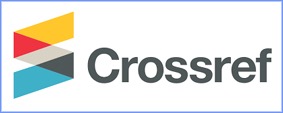Analisis Penggunaan Cerita Rakyat Bengkulu dalam pembelajaran Retorika/Komunikasi Massa
DOI:
https://doi.org/10.29240/estetik.v1i1.513Keywords:
rhetoric, public communication, folkloreAbstract
Downloads
References
Alwi, Hasan. 2002. Kamus Besar Bahasa Indonesia. Jakarta: Balai Pustaka.
Anggraeni, Nina (2012) Peningkatan Kemampuan Menulis Puisi Dengan Menggunakan Model Sugestopedia. http://repository.upi.edu/10745/ (Diunduh tanggal 23 Maret 2017)
Arikunto, Suharsimi. 1997. Dasar-dasar Evaluasi Pendidikan. Jakarta: Bumi Aksara.
Atmazaki. 1993. Pengantar Aprsesiasi Karya Sastra. Jakarta: Bumi Aksara.
B. Uno, Hamzah. 2008. Model Pembelajaran. Jakarta: Bumi Aksara.
Cangara, Havied. 2002. Pengantar Ilmu Komunikasi. Jakarta : Raja Grafindo Persada.
Djiwandono, S. 1996. Tes Bahasa dan Pengajaran. Bandung: ITB.
George, Robert A., Michael Owens Jones. 1995. Folkloristics: An Introduction, Indiana University Press.
Imran, Abi Adli. Retorika Bahasa Indonesia. https://blogmateri.wordpress.com /2015/02/12/makalah-retorika-bahasa-indonesia/ (Diunduh tanggal 23 Maret 2017)
Moleong, Lexy. 1998. Metodologi Penelitian Kualitatif. Bandung: PT Remaja Rosdakarya.
Nababan, Sri Utari Subyakto. 1993. Metodologi Pengajaran Bahasa. Jakarta: Gramedia Pusataka Utama.
Nurgiyantoro, Burhan. 1987. Penilaian dalam Pengajaran Bahasa dan Sastra. Yogyakarta: BPFE
Nur, Moh. 2001. Pemotivasian Siswa untuk Belajar. Surabaya. University Press. Universitas Negeri Surabaya.
Poerwadarminta. 1985. Kamus Umum Bahasa Indonesia. Jakarta. Balai Pustaka.
Rakhmat, Jalaludin. 2009. Retorika Moderrn Pendekatan Praktis. Bandung: RemajaRosdakarya.
Suprapto, Tommy. 2006. Pengantar Teori Komunikasi. Yogyakarta: Media Pressindo.
Tarigan, Henry Guntur. 2009. Metode Pengajaran Bahasa.bandung: Angkasa Bandung.
Downloads
Published
How to Cite
Issue
Section
Citation Check
License
Copyright (c) 2018 Rio Kurniawan, Didi Yulistyo

This work is licensed under a Creative Commons Attribution-NonCommercial-ShareAlike 4.0 International License.
Authors who publish with ESTETIK : Jurnal Bahasa Indonesia agree to the following terms:
- Authors retain copyright and grant the journal right of first publication with the work simultaneously licensed under a Creative Commons Attribution-NonCommercial-ShareAlike 4.0 International License (CC BY-NC-SA 4.0) that allows others to share the work with an acknowledgment of the work's authorship and initial publication in this journal.
- Authors are able to enter into separate, additional contractual arrangements for the non-exclusive distribution of the journal's published version of the work (e.g., post it to an institutional repository or publish it in a book), with an acknowledgment of its initial publication in this journal.
- Authors are permitted and encouraged to post their work online (e.g., in institutional repositories or on their website) prior to and during the submission process, as it can lead to productive exchanges, as well as earlier and greater citation of published work (See The Effect of Open Access).






